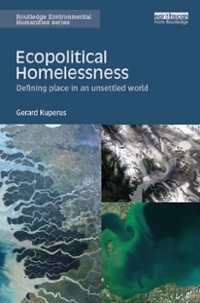Summarize the answers.
The attachments are just many but small.contentwise.
10. (23 points) The following question is another screening/ testing question, which will require you to use Bayes' rule. Remember, Bayes' rule says: Pr(A;) * Pr(B|A;) Pr(A;|B) = Et Pr(A;) * Pr(B|A;) Suppose we have a test for breast cancer that is better at detecting who is not sick for people who are not sick than for telling who is sick. For someone with breast cancer, it will correctly identify them as having cancer 90% of the time (10% of the time they will be misdiagnosed as not having cancer). Someone without breast cancer will be identified as having cancer 5% of the time (95% of the time they will be correctly diagnosed as not having cancer, and 5% of the time they will be incorrectly diagnosed as having cancer). Using our previous notation, Pr(+ C) = 0.90, Pr(+[NC) = 0.05, Pr(-[C) = 0.10, Pr(-[NC) = .95. a. Suppose there is a population of 1,000 women, and 20% (200) have breast cancer, and 80% do not (800 do not). Calculate the probability of getting a false positive (P(NO|+)), a true positive (P(C|+), a false negative (P(C|-)), and a true negative (P(NC)-)). Use Bayes' law.b. Now suppose we consider a population of 1,000 women whose mothers all have breast cancer. Suppose that 40% of them have the disease and 60% do not. So 400 have cancer, and 600 do not. Calculate the probability of getting a false positive (P(NC|+)), a true positive (P(C)+), a false negative (P(C)-)), and a true negative (P(NCI-)). UIse Bayes' law.c. Imagine we have the following costs and benefits of screening. Table 1: Benefits and costs of screening (per person per year) Dollar values (1000s) Screening costs 0.1 Treatment costs (if diagnosed positive) 5 Benefit of thinking you are negative 0.1 Benefit from early treatment (if sick only) 10 Cost of bad reaction to screen 0.02 Extra cost of false positive 5.5 What are the net benefits of this screen in the population described in part a.? What about in the population from part b.? Which population benefits more (on a per-person basis)?d. Does it matter if the test is done once per decade or once per year?11. (23 points) Consider a market for elbow surgery where no one in the market has insurance. Let the demand curve for elbow surgery be P = 2000 - 40. Let the supply curve for elbow surgery be P = 1000 + Q. a. Graph the supply and demand curves and find the equilibrium price and quantity. Note on the graph the consumer and producer surplus created in the market.b. Now assume everyone in the market buys an insurance policy that pays for 75% of any elbow surgery (so the coinsurance rate is 0.25). Redraw the graph from part a. above and add the effective demand curve now that everyone has insurance. What is the new equilibrium price and quantity? On the graph, illustrate consumer and producer surplus as well as any dead-weight loss that may result from moral hazard.c. True or false. If the increase in consumer and producer surplus from having insurance is greater than the dead-weight loss that results from the market after insurance is bought, then insurance increased economic wellbeing despite the dead-weight loss. Explain your reasoning.12. (23 points) This question is about the choice of insurance for a risk-averse consumer. Suppose my utility function is U(w) = vw, where w is my wealth in $1000. Suppose I face a risk p of getting sick, where p = 19/36. Suppose my initial wealth $100,000, but if I get sick, it falls to $64,000. This question will ask you to do some calculations (leaving numbers in fractions is fine). For partial credit, draw the graph and discuss what you find. a. What is my marginal utility of wealth when sick? When well? Am I risk averse? Risk loving? Risk neutral?a. What is my marginal utility of wealth when sick? When well? Am I risk averse? Risk loving? Risk neutral?c. What is the actuarially fair premium (expected value of my loss)?d. What is the most I would be willing to pay to shed the risk

















